The Chinese people's love for rabbits is almost engraved in their DNA: China's first lunar rover is called "Jade Rabbit"; the first lunar soil digital collection released by the lunar exploration project is the Space Rabbit. Even the Rabbit in the Chinese zodiac is said to be a perfect match for the Rabbit when the ancients made their zodiac signs based on time. Only then did Tutu be placed in fourth place. Even among the twelve zodiac animals, only the rabbit stands out and wins the endorsement of the traditional festival Mid-Autumn Festival. How is this national auspicious role developed? Let’s take a look.
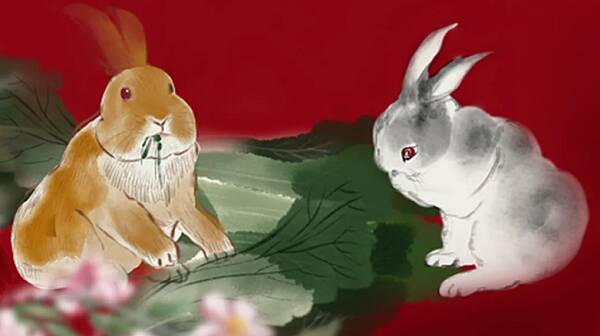
1. How to cultivate national auspiciousness and responsibility
A rabbit's fate is determined from the moment it is born. The main basis for judgment is whether its coat is white or not. In ancient times, whoever found a white rabbit would present it to the court to show that the monarch was wise and the country was well governed. In the Han Dynasty alone, according to the "Book of Han", there are three records of offering white rabbits.

2. Why is the little white rabbit so noble?
The current white rabbits were introduced from overseas during the Chongzhen period of the Ming Dynasty. Before that, there were very few pure-colored rabbits, and most of them were grass rabbits: their coats were khaki and mottled, and even their eyes were not as bright red as those of white rabbits. Like other livestock, the rabbit was served on the table without exception. "The Book of Songs: Rabbit Collection" "Surves the Rabbit's Girdle, and the Tintin in the Lin" describes the process of catching rabbits. "The Book of Songs: Xiaoya" says, "If there is a rabbit with a head, you can burn it with a cannon. A gentleman has wine, so he can offer it with his own words." It talks about roasting rabbits to entertain good friends.
At that time, rabbit meat could also be used as tribute and used in some special ceremonies. "Book of Rites: Qu Li Xia" records: "When it comes to sacrifices to the ancestral temple, the ox is called Yiyuan Dawu... the rabbit is called Mingshi." These examples prove that although rabbits entered the lives of the ancients very early, they Nothing special in every aspect. Until the first solid-colored white rabbit was accidentally discovered.
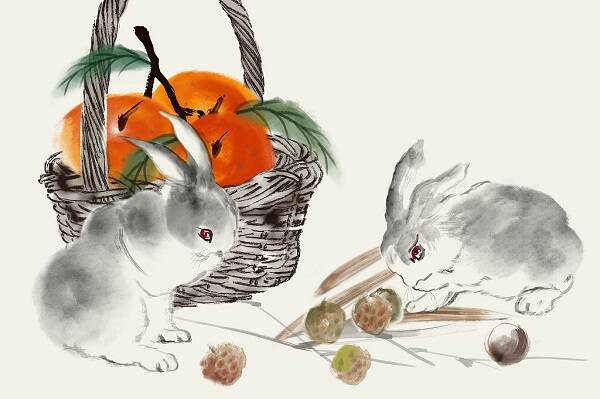
3. The ancient people’s strange ideas about the white rabbit
Now, most people know that the color of a white rabbit’s coat is determined by its breed. But in the past, in order to understand, the ancients exhausted all kinds of imagination. One of the more widespread conjectures is similar to Emperor Wen of Liang Dynasty's "Shangbai Rabbit Watch", which says that rabbits "change their appearance at a thousand years old". This view holds that people’s hair will turn gray as they age, and the same goes for rabbits. There are more mixed-haired rabbits in life because rabbits live too long. Only when they live to a certain age can they complete their gorgeous transformation.
This idea sounds reasonable and has been recognized by many people. Ge Hong of the Southern Song Dynasty also wrote in "Baopuzi": "Tiger, deer, and rabbits all live a thousand years. Those who are over five hundred years old have white fur." This means that rabbits have a lifespan of 1,000 years and can live to be 500 years old. The coat will turn white.
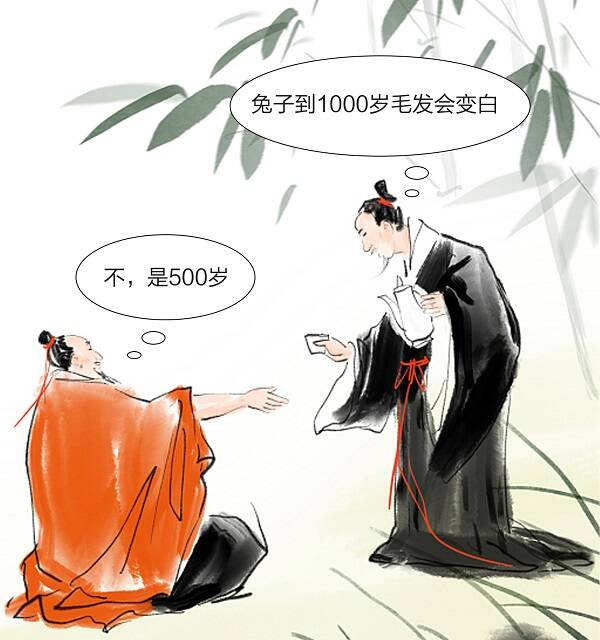
4. Those legendary white rabbits
The rare quantity + the theory of white fur related to longevity gave Rabbit a unique Buff. Gradually, more and more legends surround Rabbit. For example, it is said that it is the medicine-making rabbit who makes the elixir of immortality next to the Queen Mother of the West; the moon, which has represented longevity since ancient times, has become the residence of rabbits; in the legend of Chang'e flying to the moon, the moon became Guanghan Palace, and the medicine-making rabbit became Chang'e. The subordinates are usually called "Jade Rabbit", which has auspicious meaning.
Thanks to popular propaganda, Tutu has become synonymous with "immortality". Even if there were more and more white rabbits later and the mystery of coat color was solved, its status would not be affected at all.

5. Homophonic memes in Chinese rabbit culture
The so-called "meeting a rabbit brings auspiciousness", in traditional Chinese culture, the rabbit has always been a representative of auspiciousness. People's interpretation of the meaning of rabbits has also been taken to the extreme by using homophonic memes.
1.Rabbit=vomit
Rabbits symbolize "many children and grandchildren, and a prosperous family" in folk culture. This is mainly due to its ability to reproduce. It is said that the reason why it is called rabbit is the homophony of "Tuzi". It is said in "Lunheng" that "the rabbit licks the male hair and becomes pregnant, and then gives birth to a child, which is spit out from the mouth."
The idea that "you can get pregnant by licking your fur" sounds ridiculous, but it reflects the ancient people's understanding of the reproductive ability of rabbits. In wedding customs, the ancients often used patterns such as "snake and rabbit" to make paper-cuts to decorate the bridal chamber. In addition, the double rabbit pattern is also an auspicious pattern that symbolizes harmony between husband and wife and a happy marriage.
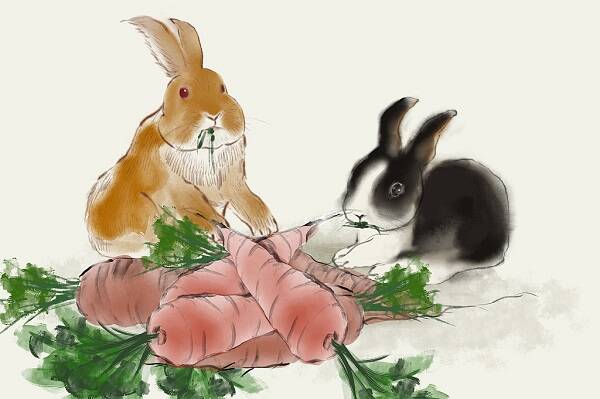
2. Rabbit = brings wealth and a bright future
Among the people, rabbits also have the meaning of good luck and wealth. Rabbits love to eat radishes and cabbage. Cabbage is homophonic to "Baicai", and radish is homophonic to "Pabbu". The meaning of the combination of the two is: the more "wealth" there is, the more "wealth" there is, and each "step" means "wealth". In ancient times, businessmen often wore jade carvings of rabbits, which had a beautiful meaning of fortune.
In addition to attracting wealth, rabbit is homophonic with the word "road", and there is also a saying that "the moon palace wins the crown". Therefore, it also has auspicious meanings such as a bright future (rabbit) and great ambitions (rabbit).
In addition, the rabbit also has the special identity of the medicine-making rabbit, which symbolizes longevity and health. The image of its long and powerful hind limbs and its ability to jump up also gives it the meaning of climbing higher and higher step by step in folklore.
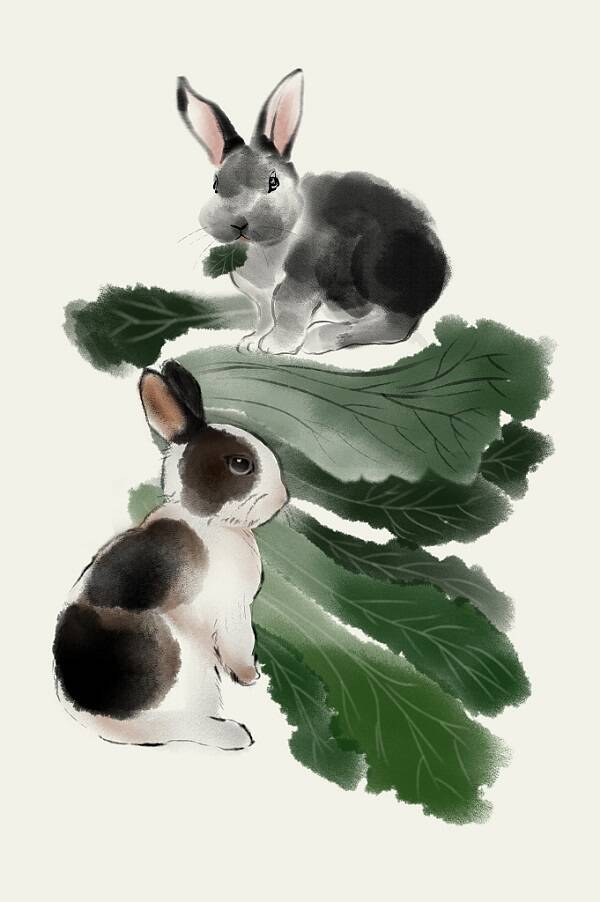
6. Send 365 days of blessings in the name of Tutu
2023 is the year of the Rabbit. When the national trend of playing memes hits the rabbit culture, the ways of playing homophonic memes are no longer limited to homophones of Chinese auspicious words such as "rabbit" making rapid progress, making great achievements, "rabbit", and "rabbit" is like a brocade. There are more ways to play. .
For example, borrowing the English pronunciation of "to", Best Wish "Rabbit" You use the rabbit to say a happy new year in a new way. Today, Xiaozhao also borrowed the homophone of rabbit to send New Year blessings to everyone. Good Luck Rabbit You, Rabbit suddenly gets rich.
I believe that the rabbit, which has been a symbol of auspiciousness since ancient times, will definitely bring you the good luck of the "rabbit" and inject you with the fortune of "rabbit" in the new year and the "rabbit" in front of you in the new year. energy.
animal tags:
We created this article in conjunction with AI technology, then made sure it was fact-checked and edited by a Animals Top editor.